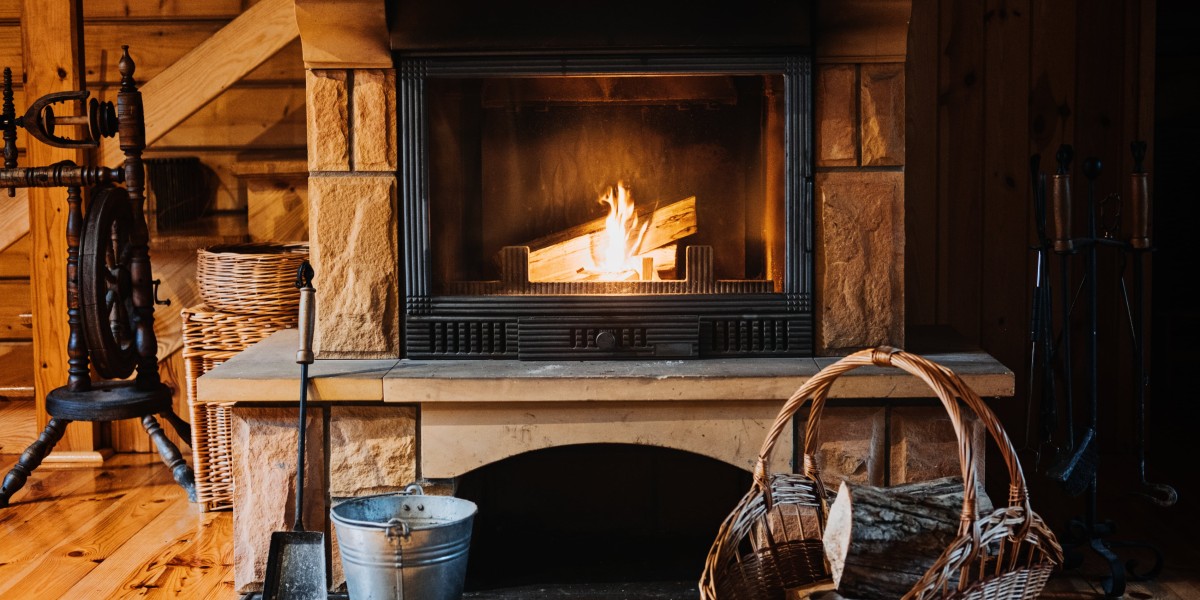Unlike traditional open fireplaces wood stoves are engineered and designed to burn firewood. This allows them meet the stricter emission requirements.
Wood burning stoves offer glowing yellow flames, cozy crackling sound and that innate feeling of warmth. The smoke that is produced is filled with harmful air pollutants such as benzene, formaldehyde, and polycyclic aromatic hydrocarbons.
Efficient
Fireplaces and stoves that burn wood provide beautiful and natural heat to the home, they are also extremely efficient. A top-quality wood stove can have an Ecodesign rating of up to 77%. It is crucial to get the most out of your log stove particularly with the rising energy costs. The good thing is that it's easier than ever to do!
A key factor in how effective a wood-burning stove can be will be the water content of the wood. We recommend using only dried and seasoned wood that has dried for at least one year and in many cases two years. The more dry the wood is more dry, the better it burns. This results in less smoke, and less harmful emissions.
A wood burning stove has the benefit of being an environmentally friendly fuel source, which is beneficial to the environment. If you buy locally-sourced wood, you also help to promote the active conservation and management of woodlands. This is great for wildlife.
The only thing that a wood burning stove needs in terms of maintenance is that you regularly remove and dispose of ash. It can be a bit of a hassle, but it is worth it to get the best heat from every log. If you wait for the ashes 2-3 days to completely cool, they can also be used as a non-toxic, environmentally friendly melting ice. They can be used to polish jewelry or absorb odors.
A fireplace that burns wood is a timeless classic. Although they're not as popular than gas fires, there is no denying the beauty and appeal of a warm log fire. They are ideal for snuggling up with on cold nights, and they create a warm and welcoming area in your home. Investing in a high-quality wood burner will pay off for a long time. Our expert chimney sweeps are here to help you get the most from your stove - give us a call today to learn more.
Low Carbon
Wood burners that are efficient and clean are among the best ways to save money on logs while keeping your home warm. In addition, they also help to support the local woodland management. It's a fantastic way to support the wildlife in your area.
Wood-burning fireplaces and stoves create very little pollutant if they are properly maintained and are used with dry, seasoned firewood. However, if they are not maintained properly or are made of poor quality wood the smoke generated by them contains fine particles (known as particulate pollution) which can cause irritation to the lung and other organs. It also contains carbon monoxide as well as toxic air pollutants such as formaldehyde, benzene, and polycyclic aromatic hydrocarbons. Inhaling this kind of air pollution can cause irritation to the lung as well as wheezing, coughing, and asthma attacks. It can even cause serious health issues like cancer, heart disease or premature death.
Some people fear that using a wood burning stove will contribute to climate change however this isn't necessarily the case. Burning wood is a carbon neutral energy source. Through the life of a tree it absorbs carbon dioxide, and when burned the absorbed carbon is released back into the atmosphere.
The wood is sourced locally, which reduces the amount of pollution emitted in the transportation process. It is also essential to use high quality, seasoned hardwoods as these will have a longer and more even burning time than softwoods.
Modern wood stoves, like the ones made by Charlton & Jenrick, emit significantly less pollutant than older stoves. They have been tested and certified to meet the 2020 EPA standards, which are significantly more strict than previous emissions limits.
All wood burning stoves should be fully vented to the outside of your home to ensure that they do not create a haze of exhaust within your home. By keeping the flames away from the logs and ensuring that you use dry, seasoned wood, all of our current clean burn and DEFRA exempt stoves are capable of producing very clear exhaust. They also have particle levels of 60 or more lower than the DEFRA limit.
A wood-burning stove that has an acatalytic converter or hybrid unit can provide the best low-carbon heating solution. These units ignite the gases and particulates that were ignited during the initial combustion in a subsequent stage by mixing them with superheated air. The remaining gases and particulates are transferred to a catalytic unit for a final third combustion. This further reduces emissions to levels well below the standards set by the government.
Clean Burn
Cleanburn wood stoves are made to burn fuel with the greatest efficiency that is achievable. This results in minimal particles emitted into the atmosphere when burning wood. The stove's air management system controls the intake and exhausting of gases, ensuring that the combustion process is conducted in a controlled, sealed atmosphere. It also regulates the height of the flame to maximize the output of heat and reduce emissions.
This means that your chimney as well as the surrounding area will be a lot cleaner than older stoves. Particulate matter, also known as particle pollution, is a result of wood that is not properly burned can cause respiratory issues, like coughing and wheezing. It can also can contribute to heart disease and stroke, diabetes and other serious ailments. The air pollution resulting from wood combustion is a contributory factor in poor urban air quality.
The smoke that is emitted from poorly combusted wood is a mixture of fine particulate matter and dangerous air pollutants such as carbon monoxide volatile organic compounds nitrogen oxides, benzene, formaldehyde and polycyclic aromatic hydrocarbons. These particles can be absorbed into the lungs, and other organs, causing discomfort, injury, and even death. Airborne dust can also damage surfaces within your home with a smudge-like feeling.
It's important to use only high-quality, seasoned and dried firewood when using your wood burner fireplace. The most effective woods for heating are hardwoods like beech, ash, and oak. Hardwoods are dense and BTU content and they provide more heat than softwoods.
Check with your local authorities to see whether they have rules regarding wood burning. These could include nuisance/odor regulations and visible emissions or opacity limits for smoke.
It is essential to keep the glass of a stove with an open front that is free of dirt and deposits. You can make use of a dry towel or oven cleaner spray for this. You can also add bicarbonate of soda mixed with a little water to the glass.
Regular maintenance is also important for your stove and chimney. This includes regular chimney cleanings that remove creosote as well as ensure proper functioning of your flue. Also, make sure you mark dates for regular inspections in your diary, as this will help you avoid costly repairs and prolong the life of your wood burner.
Low Maintenance
Wood burning fireplaces are popular due to their natural warmth. However, this kind of fire requires a bit of upkeep and maintenance. The chimney, flue, and stove are all possible sources of house fires if not cleaned and maintained regularly. They also provide warmth in the event of power outage, particularly during winter storms, when tree branches can fall and power lines could be damaged.
Utilizing a wood burner for heating will reduce your carbon footprint considerably compared to other fossil fuel sources, such as gas. Modern wood stoves and inserts have been designed to conform to EPA (Environmental Protection Agency) standards which mean they emit very little carbon dioxide. The more well-seasoned wood that you use the more efficient your stove will be. You'll need less wood to generate the same heat.
Fireplaces require some care and maintenance. They should be placed away from the combustible materials and have a screen. Cleaning the grate of ash and debris will allow airflow, which will prevent the fire from dying quickly. It will also help keep your indoors clean. You should have your stove and chimney cleaned at least twice per year to prevent the build-up of creosote which could create a dangerous fire hazard and a blockage that can hinder circulation.
A wood-burning stove needs to be tended constantly and it could take some time for a new homeowner to learn how to ignite, light and maintain a constant fire in the fireplace. Once you've learned the art of lighting, your wood burning stove will be an ideal source of warmth and comfort in your home.
 Wood burning fireplaces are around in a variety of forms or styles for over 500 years. They've gained popularity due to their effectiveness, sustainability, and the natural warmth of real wood. If you're thinking about buying installing a new heater, speak with your local Regency certified dealer to find out more about the advantages of an insert or stove made of wood for your home.
Wood burning fireplaces are around in a variety of forms or styles for over 500 years. They've gained popularity due to their effectiveness, sustainability, and the natural warmth of real wood. If you're thinking about buying installing a new heater, speak with your local Regency certified dealer to find out more about the advantages of an insert or stove made of wood for your home.








